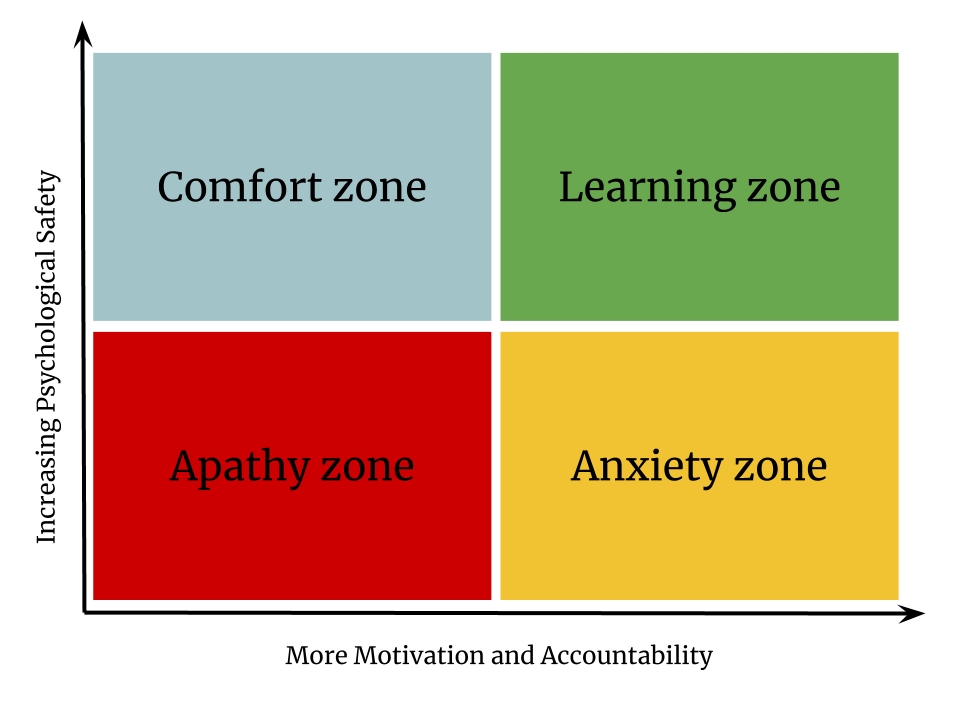Human evolution has led us to develop survival mechanisms that allow us to move fast in order to get out of life-threatening situations. A potential threat triggers a number of physiological changes as our brain starts to prepare us for action by sending signals that put our body in a state of heightened awareness and response.
In this state, the redirection and reallocation of our body's resources, including within the brain itself, means that, among other things, our capacity for reasoned thinking is compromised. This survival mode is widely known as the fight-or-flight response.
Besides diminishing our ability for reasoned thinking, the heightened state of awareness suppresses our immune systems and causes our digestive system activity to minimize. This means, if we are in the mode for sustained periods, we are more likely to get sick or become exhausted.
Threats and bullying, typical in pressure-driven workplace cultures, will result in our survival instincts being activated. There is also evidence that in this state we're more biased in our judgment of others' behavior and more likely to judge it with negative intent. This further compounds the problem and will often end up in team members taking defensive positions.
For example, if our team's Product Owner berates the team for always asking questions and is openly frustrated with their lack of progress, the team will stop asking questions because it no longer feels safe to do so. Our team feels shut down and to protect itself from the open hostility, will just get on with the work as requested.
However, down the line, this can lead to further problems if our Product Owner then shows further frustration toward our team when they don't deliver the right thing. For our team, it's a vicious circle and will likely lead to further protectionism, resulting in increasingly less communication and collaboration.
This causes problems for knowledge workers, who in order to be successful in our work, need to gather, interpret, and convert large amounts of information into useful output, in our case, software. It often requires our team to interact with other teams or people both inside and outside of our organization in a cooperative fashion. The more complex the problem, the more likely there is a need for this.
Research work carried out by Amy Edmondsen, Harvard University, shows that a team's learning ability is affected by a team's perception of how psychologically safe it feels to be open and honest.
As she shows in the following diagram, if we push to increase our team's motivation and accountability without them feeling psychologically safe to do so, we push our team into the Anxiety zone:

Here, they will be motivated to get things done, but in their state of anxiety will lose the ability to think strategically, often taking shortcuts or wrong turns and increasing the likelihood of rework.
If we increase psychological safety but don't give our team the drive, they will sit in the Comfort zone, happy until their lack of achievement begins to frustrate them.
If we do neither, then they sit in the Apathy zone, unable to move forward and not caring about it. It will all feel like somebody else's fault anyway.
However, if we increase both psychological safety and motivation, our team will move into the Learning zone, where they will begin to take full accountability and make strategically important contributions to the organization.
Amy Edmondson suggests three ways that we can help create psychological safety within our organizations:
- Frame the work as a learning problem: Present the work to the team as problems that need to be solved, rather than solutions that need to be implemented. This promotes collective ownership within the team.
- Acknowledge our fallibility: State that we don't have all the answers, but by working together we may be able to find them.
- Model curiosity: Ask plenty of questions and demonstrate to our team it's ok for them to do the same.
